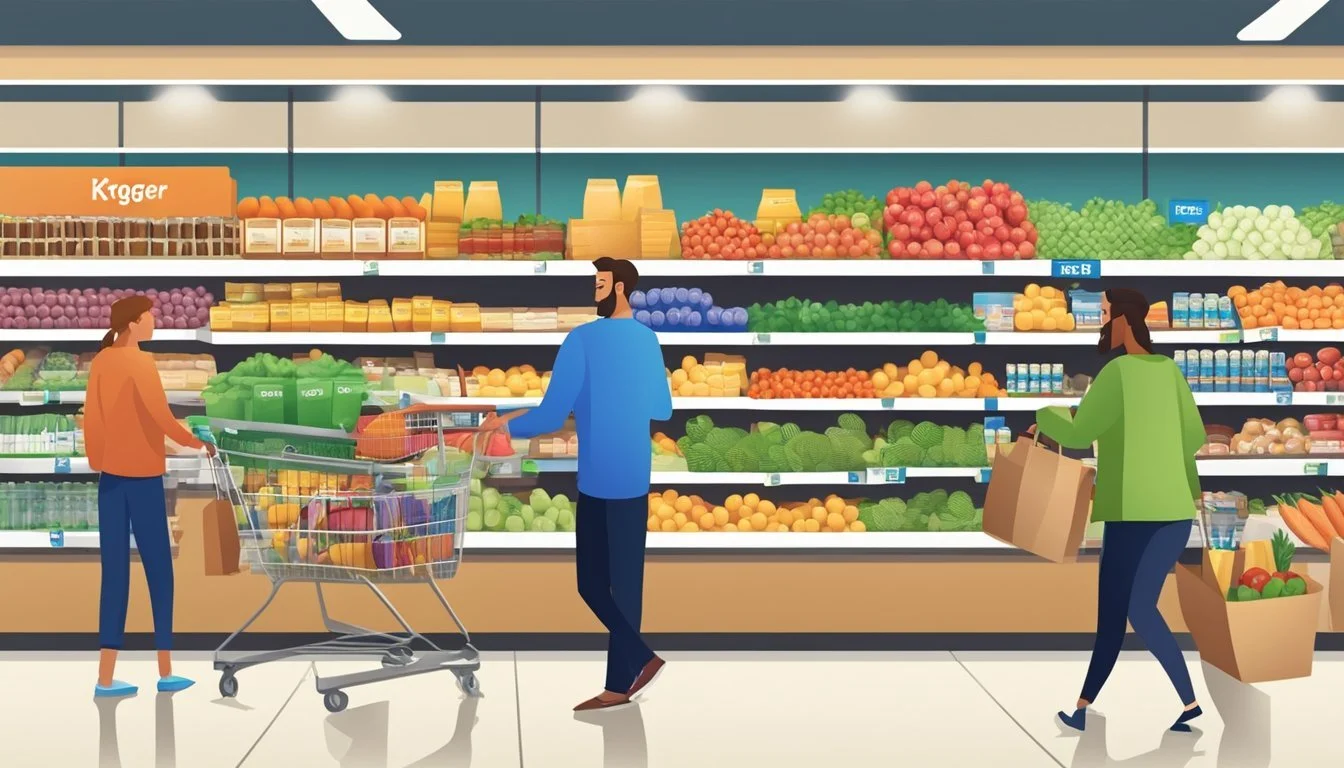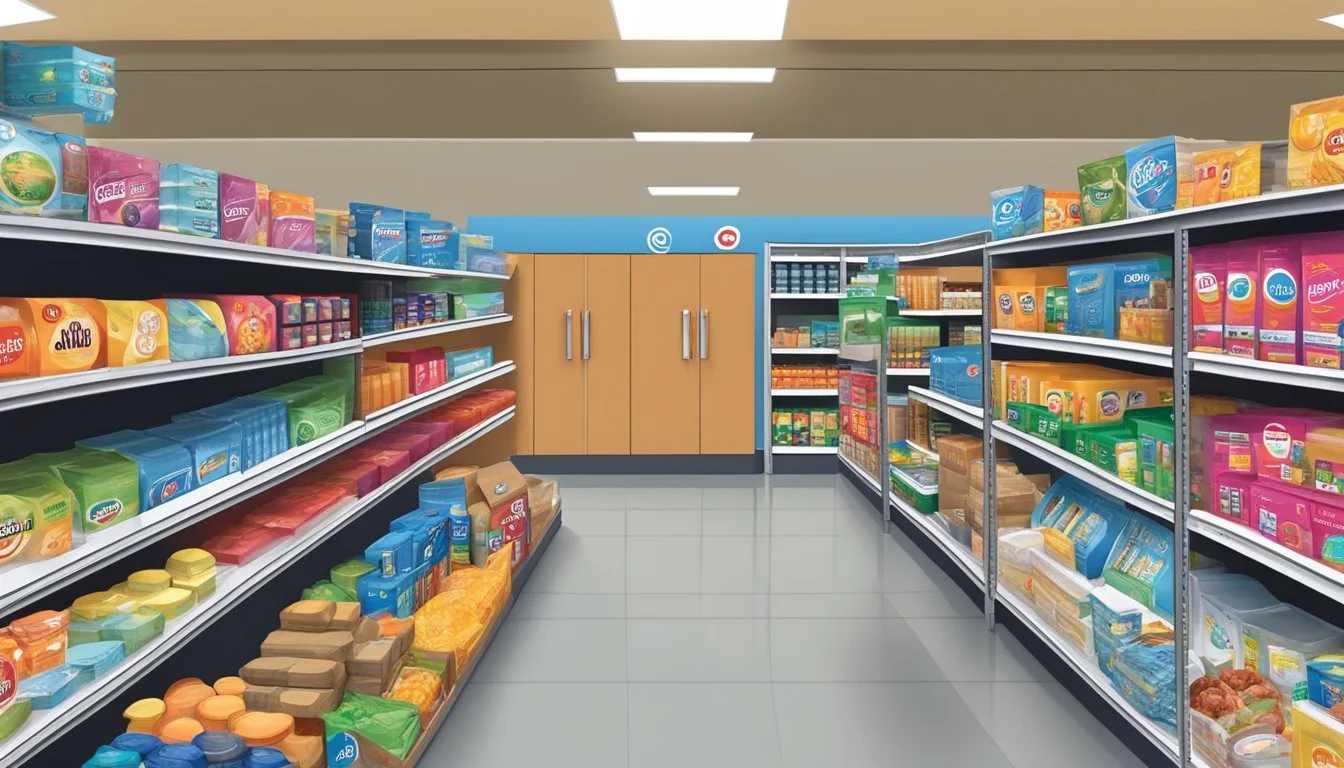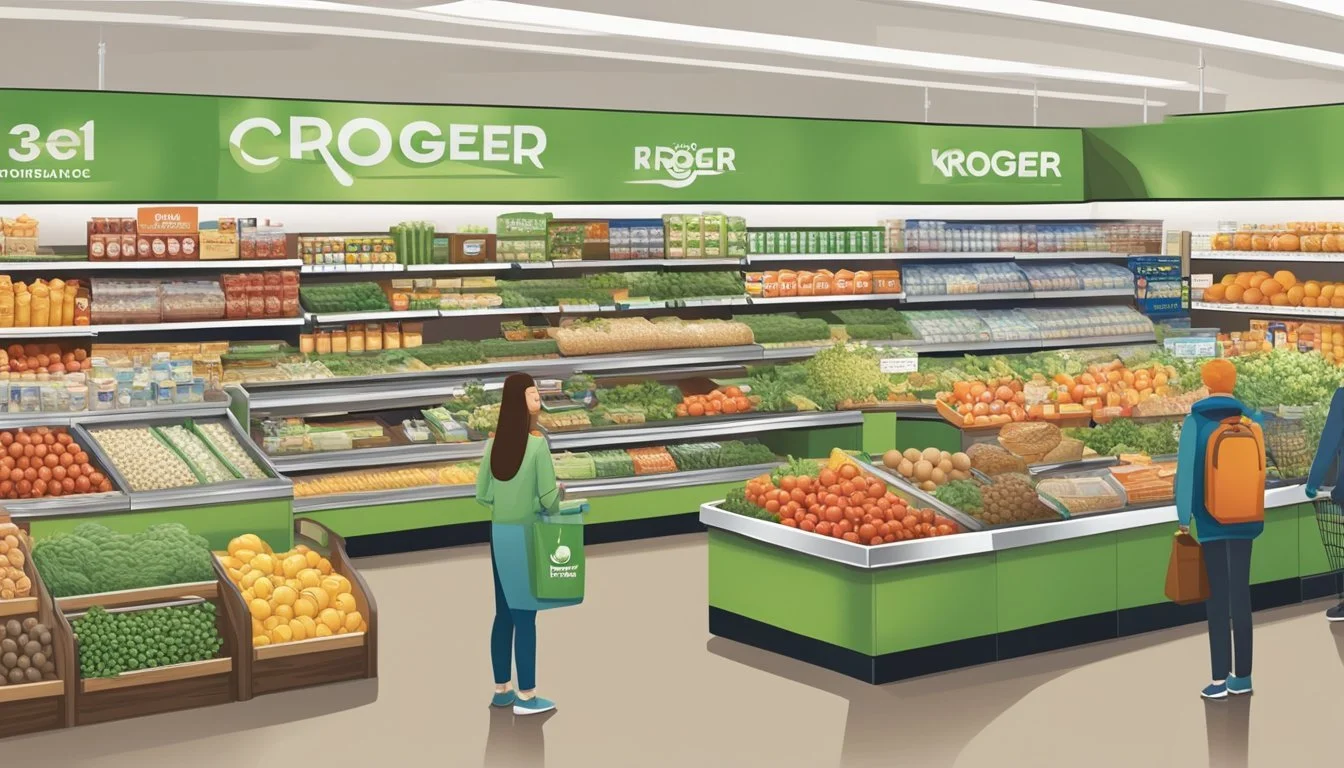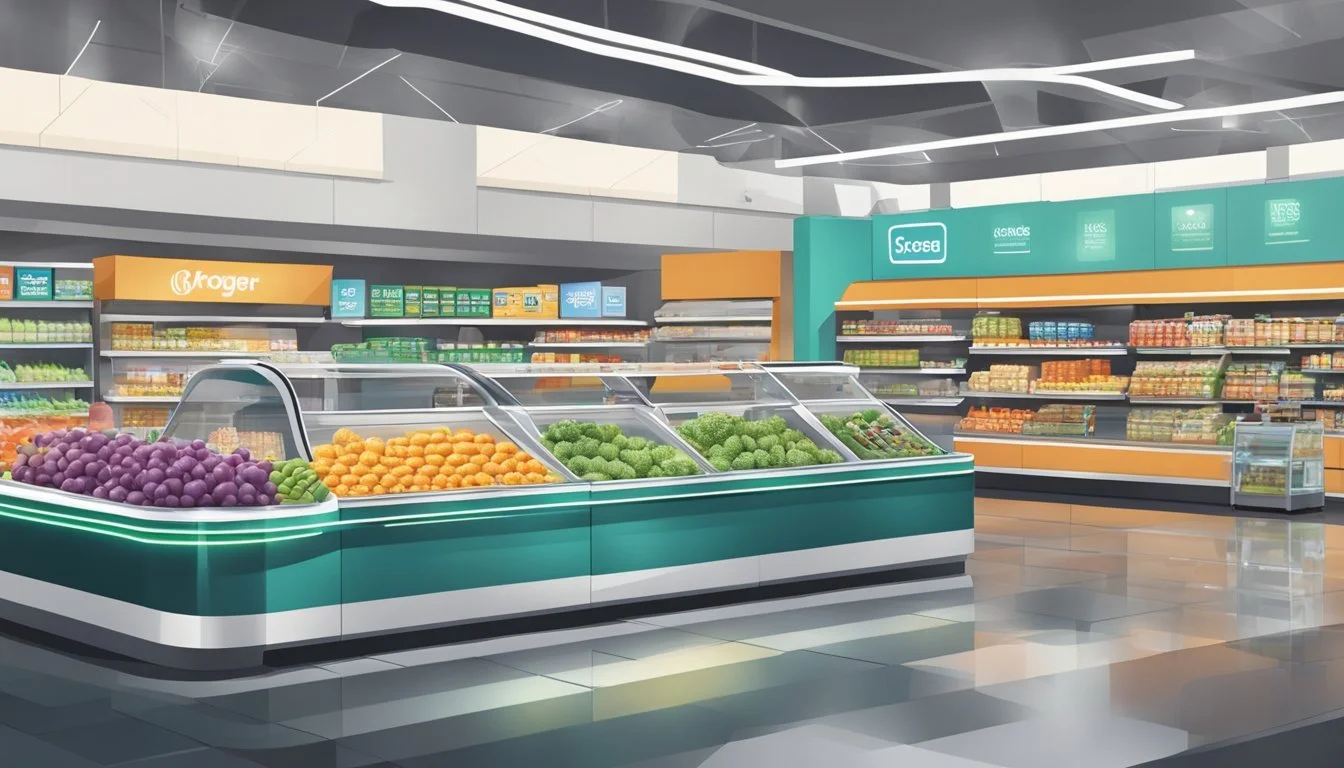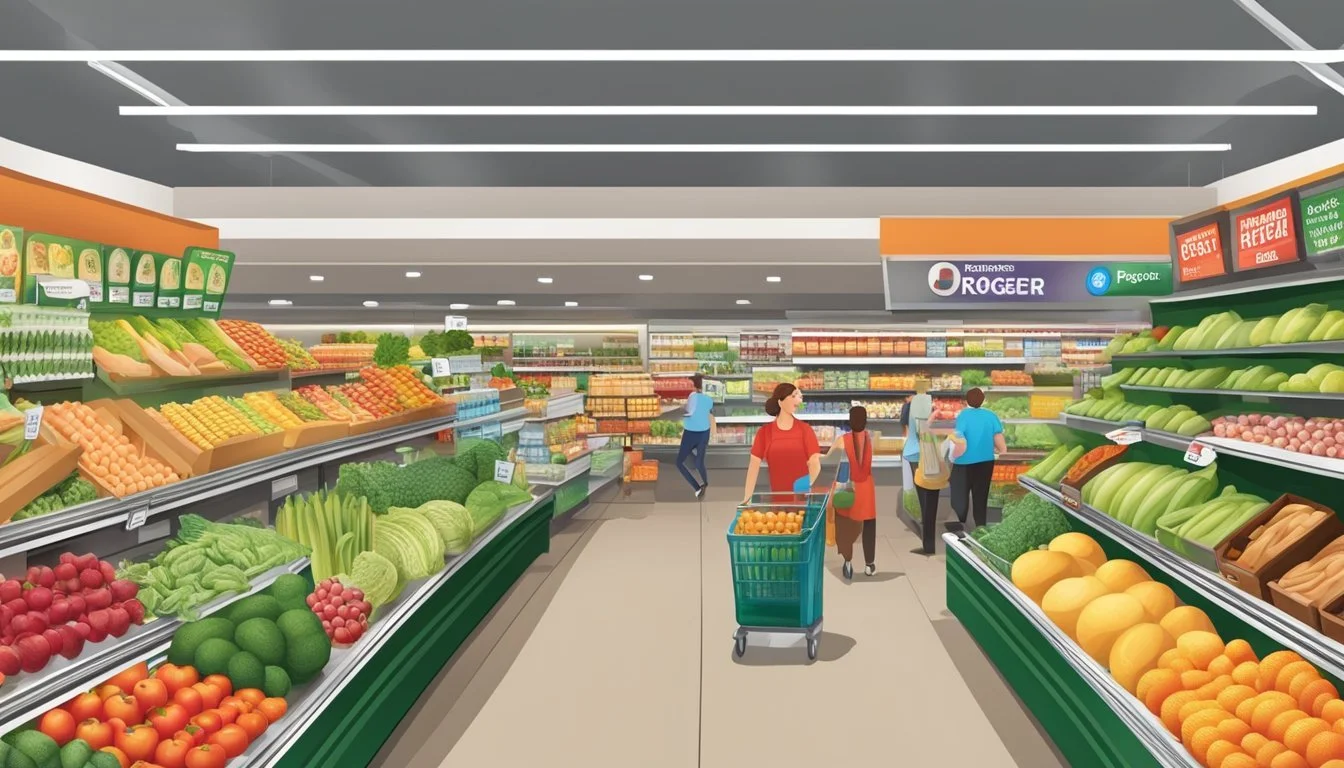Target vs Kroger
A Comprehensive Comparison of Price, Selection, and Shopping Experience
Target and Kroger are two major retailers competing for grocery shoppers' dollars. While both offer a wide range of products, they differ significantly in their approach and focus.
Kroger, founded in 1883, is a dedicated supermarket chain with over 2,700 stores across 35 states. It specializes in groceries, pharmacy items, and fuel. Kroger generally offers better quality and prices on meat and produce compared to Target, making it the preferred choice for many grocery-focused shoppers.
Target, established in 1902, takes a different approach. It combines groceries with fashion and home decor, creating a one-stop shopping experience. Target's grocery selection may be more limited than Kroger's, but it excels in providing efficient checkouts and a diverse shopping environment.
Historical Overview
Kroger and Target have both shaped the American retail landscape through decades of growth and evolution. Their histories reflect changing consumer needs and retail trends.
The Kroger Co. History
The Kroger Co. began in 1883 when Barney Kroger invested his life savings to open a grocery store in Cincinnati, Ohio. Kroger's innovative approach included being the first to establish in-store bakeries and sell meats alongside groceries.
By the 1920s, Kroger had expanded to over 5,000 stores. The company continued to grow through mergers and acquisitions, becoming a supermarket powerhouse. In the 1960s, Kroger pioneered the concept of superstores, combining groceries with general merchandise.
Today, Kroger operates over 2,700 stores across 35 states, making it one of America's largest supermarket chains. The company has embraced technology, investing in online ordering and delivery services to meet modern consumer demands.
Target's Retail Evolution
Target's roots trace back to 1902 when George Dayton founded Goodfellow Dry Goods in Minneapolis. The company rebranded as Dayton's Dry Goods Company in 1903 and later became Dayton Corporation.
In 1938, Dayton Corporation opened its first Target store in Roseville, Minnesota. The store aimed to provide quality goods at competitive prices, a concept that would define Target's future success.
Target expanded rapidly in the 1960s and 1970s, becoming a publicly held company in 1969. The retailer differentiated itself by offering trendy, affordable merchandise and creating partnerships with high-end designers.
By the 1990s, Target had established itself as a major player in the discount retail market. The company continued to innovate, introducing its grocery concept SuperTarget in 1995. Today, Target operates over 1,800 stores nationwide, blending groceries with fashion and home decor.
Business and Market Analysis
Kroger and Target occupy distinct positions in the retail landscape, with differing market strategies and financial performance. Their growth trajectories and investor appeal reflect their unique strengths and challenges in a competitive industry.
Current Market Positions
Kroger stands as the second-largest grocer in the United States, holding an estimated 10% market share. The company operates over 2,700 stores across 35 states, generating annual revenues exceeding $121 billion.
Target, while not primarily a grocer, has carved out a significant niche in the retail sector. The company combines groceries with a wider range of products, including fashion and home decor. This diversified approach has helped Target establish a strong presence in the retail market.
Both companies maintain robust market positions, with Kroger dominating in groceries and Target excelling in multi-department retail.
Growth Trends and Forecasted Growth Rates
Kroger has shown steady growth in recent years, focusing on expanding its digital capabilities and private-label offerings. The company's emphasis on data-driven customer insights has contributed to consistent sales increases.
Target has experienced significant growth, particularly in its digital and same-day fulfillment services. The retailer's investments in store remodels and small-format stores have also driven sales growth.
Analysts project continued growth for both companies, with Target potentially seeing higher growth rates due to its diverse product mix and successful omnichannel strategy.
Investor Insights and Stock Performance
Kroger currently holds a Zacks Rank #3 (Hold), indicating stable performance and moderate growth expectations. The company's stock has shown resilience in the face of market volatility.
Target's stock has outperformed in recent years, driven by strong earnings growth and successful strategic initiatives. The company's focus on exclusive brands and digital transformation has resonated well with investors.
Both stocks offer different value propositions:
Kroger: Steady performer with consistent dividends
Target: Growth-oriented with potential for higher returns
Investors should consider factors such as dividend yields, price-to-earnings ratios, and long-term growth prospects when evaluating these stocks for their portfolios.
Product and Service Comparison
Target and Kroger offer distinct product ranges and services, catering to different shopper preferences. Their offerings vary in quality, variety, and pricing across key grocery categories.
Grocery and Perishable Offerings
Kroger excels in fresh produce and meats. Its stores typically feature larger produce sections with a wider variety of fruits and vegetables. Kroger's meat department is known for quality cuts and competitive prices.
Target's grocery selection is more limited but focuses on convenience. Their produce sections are smaller, with pre-packaged options for grab-and-go shoppers. Target's meat offerings are less extensive than Kroger's.
For dairy and bakery items, both retailers provide a good range. Kroger often has more variety in cheese and specialty breads. Target's bakery section leans towards packaged goods and ready-to-eat items.
Organic and Specialty Item Selection
Kroger has expanded its organic offerings significantly. Many stores have dedicated natural food sections. They stock a broad range of organic produce, meats, and pantry staples.
Target's organic selection is growing but remains more limited. They focus on popular organic items and their own Good & Gather Organic line. Target's specialty food options often cater to trendy diets and food preferences.
Both retailers offer gluten-free and vegan products. Kroger typically has a wider selection of international foods. Target excels in unique snacks and beverages, often featuring up-and-coming brands.
Store Brand versus Name Brand
Kroger's store brands include:
Kroger (main line)
Private Selection (premium)
Simple Truth (organic and natural)
These brands cover a wide range of products and are often praised for quality and value.
Target's store brands include:
Good & Gather (food and beverage)
Up & Up (household essentials)
Market Pantry (value grocery items)
Target's brands are designed to compete with national brands in quality and price.
Both retailers balance store and name brands. Kroger tends to offer more variety in name brands for grocery staples. Target often features exclusive partnerships with popular brands.
Pricing and Value for Money
Kroger generally offers lower prices on everyday grocery items. Their loyalty program provides personalized discounts and fuel points. Bulk buying and weekly sales can lead to significant savings.
Target's grocery prices are competitive but often slightly higher than Kroger's. They compensate with frequent promotions and their Target Circle rewards program. Target's RedCard offers additional savings on purchases.
For organic and specialty items, prices are comparable between the two. Kroger may have an edge in fresh produce and meat pricing. Target can be more cost-effective for household items when combined with non-grocery purchases.
Both stores offer price matching policies. Kroger's larger grocery selection can provide more opportunities for savings through sales and coupons. Target's value proposition often lies in the convenience of one-stop shopping.
Consumer Experience
Target and Kroger offer distinct shopping experiences for customers. Their approaches to store design, checkout processes, and customer service shape how shoppers interact with each brand.
Store Design and Layout
Target stores feature wide aisles and clearly labeled departments. The retailer uses a color-coded system to help customers navigate different sections. Bright lighting and eye-catching displays showcase products effectively.
Kroger focuses on efficiency in its layout. Grocery aisles are typically arranged by food categories. The stores often have a more traditional supermarket feel, with produce sections near the entrance and staple items positioned strategically throughout.
Both chains have adapted their designs to accommodate online order pickup areas. Target integrates its home goods and clothing sections seamlessly with groceries, while Kroger maintains a stronger emphasis on food products.
Checkout and Payment Efficiencies
Target offers multiple checkout options. Self-checkout kiosks are common in most locations. The retailer's mobile app allows for contactless payments and digital coupons.
Kroger has invested in technology to speed up checkout times. Many stores feature "Scan, Bag, Go" systems, enabling customers to scan items as they shop. The Kroger Pay app provides a quick, touchless payment method.
Both companies have implemented measures to reduce wait times during peak hours. Express lanes for customers with fewer items are standard in both chains.
Customer Service and Support
Target emphasizes friendly, approachable service. Staff members are trained to assist customers in finding items throughout the store. The company's guest services desk handles returns and exchanges efficiently.
Kroger prioritizes knowledgeable staff in specialized departments like deli and bakery. Customer service counters are typically centrally located for easy access. The chain offers loyalty programs and personalized digital coupons through its app.
Both retailers provide online and phone support for issues related to in-store or digital purchases. Target's REDcard and Kroger's loyalty card offer additional benefits to frequent shoppers, enhancing the overall customer experience.
Technological Integration
Target and Kroger have embraced digital innovations to enhance the shopping experience. Both retailers leverage technology to offer convenient e-commerce options, feature-rich mobile apps, and seamless omnichannel integration.
E-Commerce Capabilities
Target's e-commerce platform provides a user-friendly interface with robust search and filtering options. The retailer offers same-day delivery through Shipt and free 2-day shipping on many items. Target's website features personalized recommendations and easy reordering of frequently purchased products.
Kroger's digital storefront allows customers to browse products, create shopping lists, and place orders for pickup or delivery. The company has partnered with Ocado to build automated fulfillment centers, improving order accuracy and efficiency. Kroger's e-commerce platform integrates with its loyalty program, offering personalized deals and rewards.
Both retailers have invested in AI-powered systems to optimize inventory management and pricing strategies.
Mobile App Features
Target's mobile app includes a barcode scanner for in-store price checks and product information. The app offers mobile payment options, including contactless checkout. Users can access weekly ads, create shopping lists, and manage their Target Circle rewards.
Kroger's app provides digital coupons, personalized offers, and a built-in shopping list feature. Customers can use the app to track fuel points and manage prescriptions. The app also includes a product locator for in-store navigation.
Both apps offer order tracking and push notifications for order updates and promotional offers.
Omnichannel Shopping
Target excels in omnichannel integration with its "Order Pickup" and "Drive Up" services. Customers can easily switch between online and in-store shopping experiences. The retailer's app allows for in-store item location and real-time inventory checks.
Kroger's omnichannel strategy includes "Pickup" (formerly ClickList) and home delivery options. The company has implemented digital shelf labels in some stores, enabling dynamic pricing and product information updates. Kroger's loyalty program seamlessly integrates across all shopping channels.
Both retailers use data analytics to create personalized experiences and targeted marketing campaigns across various touchpoints.
Operational Strategies
Target and Kroger employ distinct operational approaches to manage their supply chains, inventory, and competitive positioning. These strategies significantly impact their efficiency, product offerings, and overall performance in the retail sector.
Supply Chain Management
Target focuses on a streamlined supply chain with centralized distribution centers. This approach allows for efficient inventory management and quick restocking of stores. The company has invested heavily in automation and technology to optimize its logistics network.
Kroger utilizes a decentralized model with regional distribution centers. This strategy enables the company to cater to local tastes and preferences more effectively. Kroger has also implemented advanced data analytics to predict demand and manage inventory flow.
Both retailers have prioritized sustainability in their supply chains. They've implemented measures to reduce carbon emissions and waste in transportation and packaging.
Inventory and Stock Efficiency
Target employs a just-in-time inventory system to minimize excess stock and reduce storage costs. The company uses sophisticated forecasting tools to predict demand and adjust inventory levels accordingly.
Kroger focuses on category management to optimize product placement and stock levels. The retailer uses data from its loyalty program to inform stocking decisions and tailor inventory to local preferences.
Both companies have invested in automated inventory tracking systems. These systems help reduce out-of-stock incidents and improve overall efficiency.
Competitive Strategies
Target differentiates itself through exclusive brand partnerships and designer collaborations. This strategy attracts fashion-conscious consumers and creates unique product offerings.
Kroger leverages its strong private label brands to offer competitive pricing and maintain customer loyalty. The company has also expanded its digital presence through partnerships with tech companies.
Both retailers have invested in omnichannel capabilities:
Target's Drive Up service
Kroger's online ordering and delivery options
These initiatives aim to provide a seamless shopping experience across physical and digital platforms, meeting evolving consumer preferences in the competitive retail landscape.
Consumer Behavior and Trends
Consumer spending patterns and preferences play a crucial role in shaping the grocery retail landscape. Economic factors and personal habits influence how shoppers choose between stores like Target and Kroger.
Shopping Habits and Preferences
Many consumers prioritize convenience and value when selecting a grocery store. Target attracts shoppers seeking a one-stop shopping experience, offering groceries alongside other retail items. Kroger focuses primarily on groceries, appealing to those who prefer a dedicated supermarket.
Price-conscious consumers often compare deals between stores. Both Target and Kroger utilize loyalty programs and digital coupons to incentivize repeat customers. Fresh produce quality is a key factor for health-conscious shoppers.
Store layout and product selection impact buying decisions. Target's curated grocery sections contrast with Kroger's wider variety of food items. Private label brands from both retailers have gained popularity as affordable alternatives to name brands.
Spending Patterns during Economic Shifts
Economic conditions significantly affect grocery spending habits. During inflationary periods, consumers tend to be more price-sensitive, potentially favoring discount chains or store brands.
Rising food prices may lead shoppers to adjust their purchasing habits:
Buying in bulk to save money
Opting for cheaper alternatives
Reducing discretionary spending on non-essential items
Fed interest rate decisions impact borrowing costs, potentially affecting consumer confidence and spending. Higher rates may lead to more cautious shopping behaviors.
Retail sales reports and GDP figures provide insights into overall consumer spending trends. These economic indicators help retailers like Target and Kroger adjust their strategies to meet changing demand.
Sustainability and Corporate Responsibility
Target and Kroger have both implemented sustainability initiatives and community engagement programs. Their efforts focus on reducing environmental impact and supporting local communities through various projects and partnerships.
Sustainability Initiatives
Target has set ambitious sustainability goals, aiming to design 100% of its owned brand products for circularity by 2040. The company is working to reduce waste, increase energy efficiency, and use more sustainable materials in its products and packaging. Target has also committed to sourcing 100% renewable electricity for its operations by 2030.
Kroger has launched its Zero Hunger | Zero Waste plan, which aims to eliminate food waste and hunger in its communities by 2025. The company has implemented food recycling programs and is working to reduce its carbon footprint. Kroger has set targets to reduce its greenhouse gas emissions and increase the use of renewable energy in its operations.
Community Engagement and Impact
Target's community engagement efforts include its Target Circle program, which allows customers to direct the company's giving to local nonprofits. The company also supports education initiatives and disaster relief efforts across the country.
Kroger focuses on fighting hunger through its Zero Hunger | Zero Waste Foundation. The company partners with local food banks and organizations to distribute meals and reduce food insecurity. Kroger also supports breast cancer research and veterans' causes through various initiatives and partnerships.
Both retailers have stepped up their community support during the pandemic, offering special shopping hours for vulnerable populations and increasing their charitable giving to address urgent needs.
Future Outlook
The future of Target and Kroger hinges on emerging market dynamics and strategic growth initiatives. Both retailers face challenges and opportunities as consumer preferences evolve and the competitive landscape shifts.
Emerging Market Dynamics
E-commerce continues to reshape the grocery industry. Target and Kroger are investing heavily in digital capabilities to meet growing demand for online shopping and delivery.
Inflation remains a key concern. Rising food prices may impact consumer spending habits and profit margins for both companies.
Sustainability is gaining importance. Target aims to design 100% of its owned brand products for circularity by 2040. Kroger pledges to eliminate food waste company-wide by 2025.
Health-conscious consumers are driving demand for organic and natural products. Both retailers are expanding their offerings in these categories.
Predictions and Strategies for Growth
Target projects 3-5% annual sales growth through 2025. The company plans to open 20-30 new stores each year and remodel existing locations.
Kroger forecasts 0.25-1.75% identical sales growth for fiscal 2024. The retailer aims to boost profitability through operational efficiencies and private label expansion.
Analysts estimate Target's FY24 earnings per share at $8.50-$9.00. Kroger's EPS is projected in the $4.45-$4.60 range.
Target's dividend yield stands at 3.1%, while Kroger offers 2.4%. Both companies have histories of consistent dividend growth.
M&A activity could reshape the competitive landscape. Kroger's proposed merger with Albertsons, if approved, would create a grocery powerhouse.
Concluding Summary
Target and Kroger both offer grocery shopping options, but they cater to different consumer needs. Kroger excels in providing a wide selection of high-quality perishables, including produce, meat, and seafood.
Target, on the other hand, offers a more diverse shopping experience. It combines groceries with other retail departments, making it convenient for customers seeking a one-stop shopping destination.
Price-wise, Kroger is not always the cheaper option. However, its focus on groceries allows for a more extensive range of products and brands in this category.
Target's grocery section may be more limited, but it often features competitive prices on everyday essentials. The store's layout and design typically create a more modern shopping atmosphere.
Both retailers have adapted to changing consumer preferences. Kroger has invested in digital platforms and expanded its organic offerings. Target has renovated stores and improved its fresh food selections.
The choice between Target and Kroger ultimately depends on individual shopping priorities. Those seeking a dedicated grocery experience may prefer Kroger. Shoppers looking for convenience and a broader range of non-food items might lean towards Target.

